iMovR Gymba Ergonomic Balance Board Review
- Lab tested
Like most reviews sites, our editorial staff and laboratory testing expenses are partially offset by earning small commissions (at no cost to you) when you purchase something through those links. Learn More

Overview
| Review Summary |
The Gymba is the category winner for balance boards for standing desk users, hands down. It is the veritable Swiss Army Knife of motion boards, combining features that would cost many times more and take up a lot more floor space to replicate with individual purchases, and thus making its $199 price a great bargain. We come to this assessment after many man-months of testing, adding up the many different ways that you can use the Gymba to improve your flexibility and general fitness and health while continuing to maintain maximum typing proficiency and overall productivity at your active workstation. |
|---|---|
| MSRP / List Price | $199 |
| Street Price |
$199 for a single Gymba |
| Shipping |
Free Shipping |
| Warranty |
5 years |
| Colors Available |
Graphite |
| Weight Capacity |
660 lbs |
| Dimensions |
18.3” x 12” x 12” |
| Product Weight |
3.2 lbs |
| Shipping Weight |
4.2 lbs |
| NEAT™ Certified by Mayo Clinic |
Yes |
| Competition | |
| Where to buy |
Buy on iMovR |
Rating
| Stability | |
|---|---|
| Safety | |
| Customer Experience | |
| Quality and Aesthetics | |
| Ergonomics | |
| Innovation | |
| Value | |
| Positives | The walking motion is completely different from any other balance board out there. We found it to be fun and engaging while delivering on all of its promised health benefits. You get a lot of different kinds of movement out of the board without ever losing focus on your work or risking injury. The two included massage balls can be moved anywhere on the concave side of the board and provide pretty quick relief to sore feet and plantar fasciitis aches. Flip it over for even more calf, back and other soreness-relieving stretches, at your desk or away from it. While the Gymba allows you to do all these things you won’t have to read a big instruction manual to figure out how; just watch a few minutes of video demonstration to discover all its features. Unlike many balance and rocker boards, the Gymba won’t damage your floors over time, and you can use it in shoes, socks or barefoot. |
| Negatives | Because this is a device focused on use while working, you won’t be able to get much of a balance or fitness challenge with it. If keeping in shape for your snowboarding weekends is your aim there are more apt products for that purpose; the Gymba is primarily designed for standing desk and treadmill desk users. The convex side of the board is carpeted so you can’t rotate easily on carpeted floors. |
Bottom Line
The Gymba, invented by expert biomechanical engineers and exercise physiologists in Finland way back in 2015, came to our attention a few years ago when it boldly claimed that it allows you to “walk while standing” at your height-adjustable desk. Given that we are (humbly) THE world’s most experienced team of treadmill desk reviewers, we were intrigued by the concept of a “poor man’s treadmill desk.”
But with so many new balance board products hitting the market over the last few years we focused first on testing the ones that were super popular in the US market. We didn’t give the Gymba the full lab-test review treatment back then because the product wasn’t easily available outside of Scandinavia and Germany, but now that iMovR has become the exclusive distributor of the product in North America we finally got our chance to put it through its paces.

When we requested an evaluation unit from iMovR we actually received six of them, one for each staff reviewer to experiment with for several weeks before we compiled our findings into this review. The immediate feedback was very enthusiastic, but after more than a month of daily use, and sharing it with other co-workers and family members to gather even more impressions, the feedback was even more positively enthusiastic. The multipurpose nature of the Gymba’s design makes it the veritable Swiss Army Knife of balance boards, and a true game-changer for all standing desk and treadmill desk users, regardless of their age or physical conditioning.
The only other product we can think of that was so widely tested by our group and found to be so universally loved was the first iMovR EcoLast anti-fatigue mat that we first reviewed in 2014. Similarly, there’s only a limited amount of “lab testing” you could do on a standing mat (e.g. durometer testing; we left the heavy medical benefits testing to Texas A&M); the most valuable testing would be from real users trying it out in real-world conditions.

Because balance boards are mostly cheap to make and easy to sell, there are endless variations. A simple web or Amazon search will bring up literally hundreds of options and most of them are simply a variation on a simple theme: generally a flat standing surface with some element below it to make the surface unstable. If that sounds stale, that’s because it is.
Beyond the basic balance boards, there are also balance trainers and rocker boards hanging out around the periphery of usefulness for standing desk users. Balance trainers come in a variety of forms, most often in either an inflatable cushion or a roller/ball under a board. Rocker boards are simpler and contain the motion to one direction.
These devices are great because they often allow you to increase the difficulty, like working up from a partially-inflated cushion to a fully-inflated cushion to a ball or a rolling pin. They are great for physical therapy, exercise and balance training, but most of them are too unstable to permit actually using them while trying to type, which leads us to the next section.
Can You Work With It?
This is really the most important question for our purposes: How does a balance board affect your ability to get work done at your desk? Many balance boards that provide more of a challenge or a workout aren’t appropriate for a work environment because they will surely hamper your typing and mousing ability, as well as your concentration. The brain can only take on so many foreground tasks, and if it’s constantly expending effort to keep your body balanced it will take a toll on your other cognitive functions.

This is where balance trainers, rocker boards, exercise, twist boards, exercise boards and many of the other devices generally falling under the category of “balance boards” we’ve reviewed fall short for work use. And it’s why the Gymba got us so excited. It is completely unique in its ability to allow a wide range of movement without requiring much balance. The motion is nothing like any other board we’ve tried.
The Gymba almost needs its own category. The Finnish inventor that patented the device called it an “Activation Board” because it allows the user to activate their leg muscles as if they were walking on a treadmill desk, not working at a standing desk. See this video demonstration using electromyography (EMG) sensors and heart monitor equipment that clearly depicts the difference between active standing, like Gymba can produce, and plain old “static standing.”
Walk While Standing
The Gymba’s patented design (check out more information on the design and how it works) effectively allows you to replicate the walking motion while standing on the board. It’s difficult to describe, but it makes sense once you see it in action. It’s essentially fluid, synchronized movement up and down between your two feet. Like walking, only without the impact or the forward movement.

It’s like a low impact stepping machine, but it’ll keep you in what The Mayo Clinic calls NEAT™ heart rate range, like when using a treadmill desk, and not vault your metabolism into a cardio exercise heart rate that would actually yield negative effects on your productivity. When you maintain a NEAT (non-exercise activity thermogenesis) heart rate more oxygen is delivered to your brain, your focus increases, and you burn some extra calories. If you were to go into true cardio, for example walking too fast on a hacked treadmill desk, you’d burn a lot of calories but your muscles would start stealing all that oxygen flow that was going to your brain, rapidly eroding your cognitive ability and making you sweat. Not the objective we’re after here.
This motion comes with all of the benefits we espouse for walking while working: boosting of metabolism, strengthening core muscles, improving posture, removing joint pain and inflammation, plus even improving your mood.
In a time when quality treadmill bases keep getting more expensive (and harder to find thanks to pandemic supply chain issues), we’d argue that the Gymba even functions as something of a “poor man’s treadmill desk” since it will activate the same muscles as walking on a treadmill desk, though obviously to a lesser degree.
Plus it allows for a greater dynamic range of movement of other muscles—whether exercising or stretching—that the continuous robotic forward motion on a treadmill belt doesn’t give you the opportunity to. In fact, we think the Gymba is the perfect complement to a treadmill desk, too, because it helps you keep all the muscles, tendons and joints in your lower extremities limber. If you’re not the most disciplined break-taker, the Gymba can be the perfect tool for fending off low back stiffness and foot soreness from long hours of standing and/or walking at your desk, without going outdoors or to the gym.
How You Use It
You can use the Gymba oriented with the concave side up for the walking motion we mentioned above. This is likely going to be how you use your Gymba 90% of the time. In this position, you can also execute a wide variety of rocking and twisting motions.
This concave orientation is also great for stretching and massaging your feet, whether that be using the architected curvatures of the board itself or using the two movable massage balls that are included with the Gymba (one is soft, one is hard – see video). People who tend to suffer from plantar fasciitis or muscle cramps in the feet will really appreciate the foot massaging feature of the Gymba. In fact, two of the staff reviewers here do suffer from frequent foot pain and are now totally in love with their Gymbas; both said it relieved their foot pain within about 10-15 minutes of actively working at their standing desks—rocking, twisting, stretching their arches and standing on the massage balls.

If you flip it over to the convex side, the Gymba is great for calf stretches, back stretches, enhanced crunches, toe lifts, heel lifts, plus many other stretches and exercises—whether at your standing desk or anywhere you want to do some body work. The ability to flip it over and use it on both sides is also something we haven’t seen with other balance boards.
An important point to consider is how much you want to use your balance board without shoes. Boards with a hard top will quickly become uncomfortable in socks or bare feet. Many are also slippery in socks. We found no foot fatigue issues when using the Gymba without shoes. We also found the foot massaging balls to work great even with shoes on, but afterward, we liked taking our shoes off for a more pinpoint massage therapy.
One extra note about use: Kids seem to love the Gymba boards. If you’re not using it, try passing it to your kids to help them focus better and work off some extra energy.
If You Had To Choose Just One, Would You Buy An Anti-Fatigue Mat Or A Gymba?

That’s a really tough question. If you’ve read a few of our standing desk reviews then you know that we habitually mention that a good anti-fatigue mat (such as iMovR’s EcoLast Premium Mats) will triple the amount of time you can stand at a desk in comfort. It’s a no-brainer investment that we recommend to every single user. Standing on these mats isn’t just more comfortable but other health benefits include reduced spinal compression and low back aches, increased sit-reach flexibility afterward, and even an increased stimulation of proprioception neurons in the feet leading to improved balance.
Up until now, it would be fair to say that using a balance board in front of a standing desk has been the province of younger people, likely ones who like to snowboard or skateboard. The many companies whose balance board products we’ve reviewed are generally run by millenial or Gen-Z founders catering to a similarly-aged audience. The Gymba is the first product in this category that works really great for users of all ages and all physical conditions, from young kids to “senior” management.
So while we wouldn’t say the Gymba should be the one to choose if you could only afford one item; a good 100% polyurethane standing desk mat is going to be a smaller investment you should make before any other ergonomic accessory, save a monitor arm or keyboard tray if you suffer from any repetitive strain injury (RSI) issues. But it would be the very next thing we’d recommend getting, for every standing desk and treadmill desk user.
We can also categorically state that the Gymba is the most multi-purpose design out of the dozens of balance boards, balance trainers and rocker boards we’ve reviewed over the past few years. You could easily spend $600 or more replicating all of its functions and take up a lot more floor space with them. Which makes the $199 price point of the Gymba look like a real bargain.
Speaking of floor space, our favorite combo for standing desk users is the iMovR EcoLast Portable Standing Mat with the Gymba (which fits perfectly over the 22” depth of the mat), and for treadmill desk users the iMovR TreadTop Standing Mat with the Gymba (which fits perfectly across the 20” width of the mat).
Kinder To Your Wood Floors

This is one of the most floor-friendly balance boards out there. The convex side is carpeted, again the only time we’ve seen that on a balance board. Most other balance boards are some form of a wooden board balanced on a base, the edges of that board will often slam down onto the floor when you get on, get off or lose your balance. They also tend to concentrate a great deal of pounds-per-square-inch of pressure on a rolling pin or mound of some sort, wreaking havoc on some floor finishes.
You’ll often find that deep in the product details other balance boards will suggest using a mat or some other protection below it to protect your floor. While there is some contact between the plastic rims of the Gymba and the floor the pressure is more distributed than on most other balance boards we’ve tested and not nearly as damaging to solid wood floors. If you’re still concerned you can always use a protective mat, or just lay it on top of your anti-fatigue mat like we do here at the review staff’s office.
The Details
The Gymba’s weight capacity is listed at 660 lbs. This is more of a “breaking point” specification than a user weight limit. So we put it to the test. Two of us at the office stood on opposite ends of the Gymba and found that the innovative plastic alloy material held up just perfectly.
This rating is nearly double the next-highest weight capacity we’ve seen from a balance board—JumpSport’s supersized “Maui” Wurf Board’s 350 lbs.—and more than double the FluidStance Level’s 300 lbs. These are more of a user weight rating, and we wouldn’t recommend jumping up and down on them like it seems you can safely do on a Gymba.

This leads us to the warranty, which is a pretty decent five years. This may seem short compared to some of the lifetime warranties in this category, but those products are typically made of wood or metal and very unlikely to ever break unless you really jump up and down on them—in which case their warranties would not cover the damage. Given that this product was sold in Europe since 2015 with an exceptionally small warranty claims rate it seems like wear and tear isn’t really going to be a common concern with the Gymba.
The Gymba comes in seven colors: Black, graphite, blue, green, pink, light gray and orange.
It measures 18.3” x 12”, which is noticeably shorter than all other “standard” balance boards. When we previewed the board, we saw this as a deficit, because we thought tall users might have a hard time getting the wide stance needed for balance. Once we used the board, however, we realized you don’t actually need balance to use it. So that deficit turned into a benefit because it’s smaller than other necessarily-longer balance boards and therefore easier to store.
The Competition

Before we got our hands on the Gymba, our favorite balance board for standing desk users was the FluidStance The Level. However, the Gymba’s unique motion and its many more uses quickly won us over. It’s simultaneously more interesting and less challenging than the FluidStance The Level. Beyond the motion, the Gymba also has a higher weight capacity, will not damage your floor over time, and can be used easily without shoes.
If you like the look of wood over the Gymba’s plastic, and looks are a big factor in your balance board decision, the FluidStance might be the option for you.
The Takeaway
The Gymba is the category winner for balance boards for standing desk users, hands down. It is the Swiss Army Knife of motion boards, combining features that would cost many times more and take a lot more floor space to replicate with individual purchases, making its $199 price point highly compelling.
We come to this assessment after many man-months of testing, looking at the number of different ways you can use the Gymba to improve your flexibility and general fitness and health, while continuing to maintain maximum typing proficiency and overall productivity at your active workstation.

Let’s face it… standing at your desk is way better than sitting, of course, but it’s still a relatively static posture that isn’t scoring you a lot of points in calorie burn or other health benefits. Even if you had a treadmill desk you’ll still find many benefits from using the Gymba for stretches and exercises that walking alone will not be able to achieve.
The patented design of the Gymba puts it in multiple categories, and in a category of its own at the same time. It’s a balance board, twist board, exercise board, calf stretcher, back stretcher, motion board and therapeutic foot massager all-in-one, and then some. And yes, you can actually walk at your standing desk, as the manufacturer claims.
What’s lacking in the Gymba? Well, if you’re comparing to other balance boards in the same price range or up to twice as expensive, its carpeted surface is more utilitarian looking than some of the very fancy wood grain boards you can buy these days. But they offer only a fraction of the usefulness of the Gymba, and most aren’t stable enough to use for long periods of time while typing.
Because Gymba’s motion is so unique, the board really must be experienced to be believed. It’s simply fun and engaging to use. With iMovR offering a 100-day satisfaction guarantee on all of its products there’s no reason not to give it a try. The Gymba won’t likely collect dust in the corner after a few uses; we’ve become completely addicted to ours.
If you’re interested in exercising with your balance board, we’ve put together a list of our favorite balance board exercises.

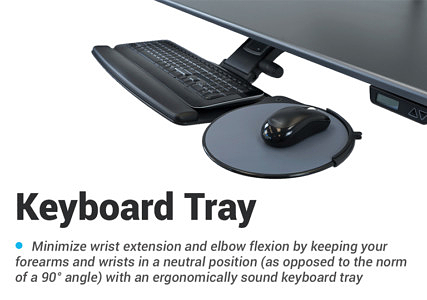
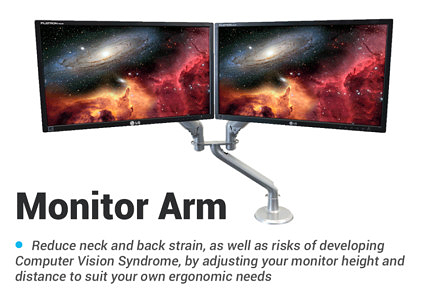
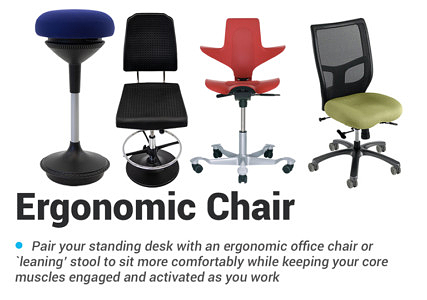
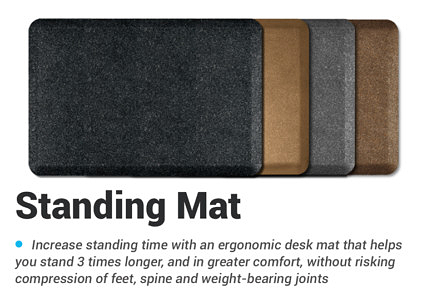
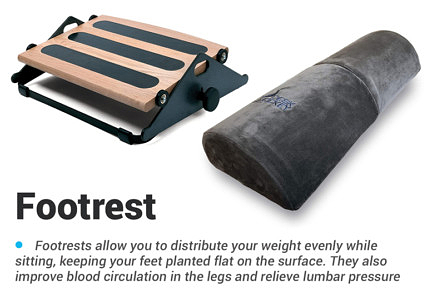
6 Comments
Leave a response >